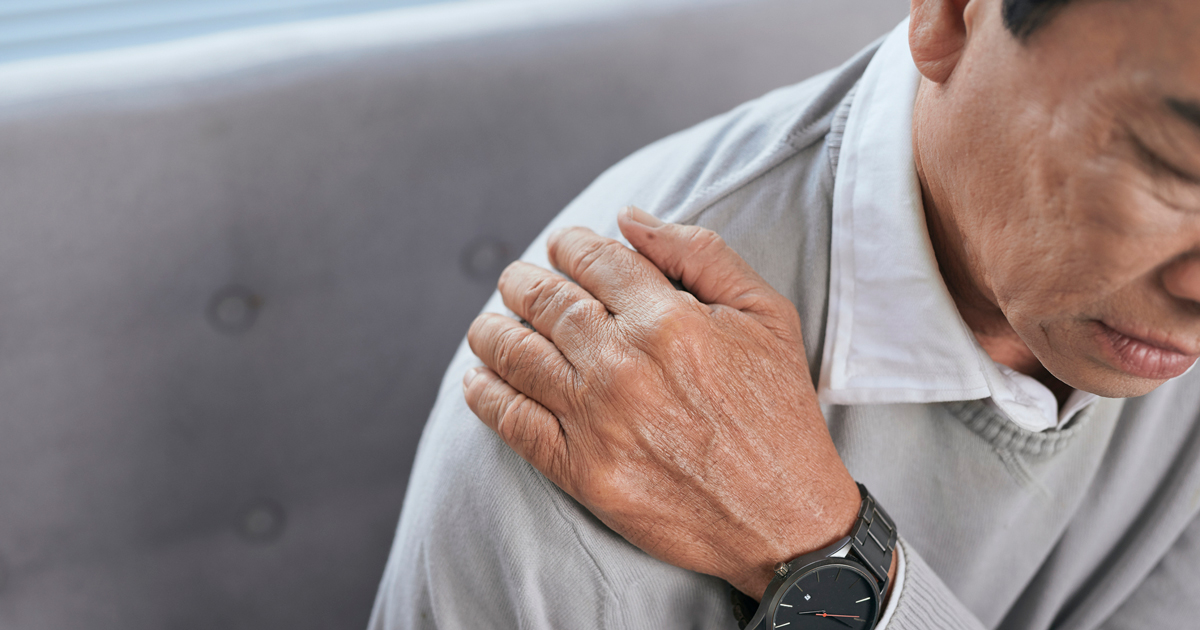A Pain in the Shoulder

It starts as a nagging pain in the upper or outer part of the shoulder that comes on when lifting or lowering your arm to the side. If it doesn’t go away, you may have a tear of the rotator cuff tendons, a common shoulder injury that occurs more frequently as we age. Many of us will try to ignore it or work through it. Ignoring the pain, however, can result in further deterioration of the joint.
Degeneration of the tendon, caused by aging or overuse, is the most common reasons for a rotator cuff tear. Degenerative tears occur over time and often start as an inflammatory process in the shoulder and can lead to smaller tears or fraying of the tendon. Additionally, bone spurs that develop on top of the tendon can cause rubbing on the tendon when lifting your arms. This may cause further degeneration and tearing of the tendon. As the damage progresses, the fraying of the tendon may advance to a complete tear.
Early Signs
Early signs of a rotator cuff injury include lateral pain and tenderness over the upper and outer part of the shoulder that may radiate down the side of your arm. You may also experience night pain, an inability to sleep on your shoulder, pain with overhead lifting or snapping or crackling sounds when moving the shoulder. If the tear becomes larger, you will also experience more acute pain and weakness when lifting your shoulder.
Degenerative tears are especially common in people who do heavy labor or repetitive work like farmers, painters or carpenters or in athletes who do heavy weightlifting or who play baseball, tennis or row.
The goal is to be seen before the tendon has completely torn. The degenerative process causes the tissue to thin and eventually disappear and may cause damage to the cartilage as well. This makes it very difficult or impossible to repair and may require a reverse shoulder replacement.
If you have pain in your shoulder that does not get better within two to three weeks with over-the-counter non-steroidal anti-inflammatories, you should see your
doctor.
If you seek care before the tendon has torn, physical therapy and over-the-counter pain relievers can help prevent or slow the degenerative process, preventing further damage and reducing the pain.
If pain continues
If the pain continues, the next steps are a steroid injection followed by magnetic resonance imaging (MRI). Depending on the findings, an arthroscopic surgical procedure called debridement, in which the shoulder area is cleaned and smoothed over, may be the next step. For those who need surgery, 90 percent or more will have excellent results. The vast majority of people, however, will get better without surgery. The key is to seek medical advice before the problem becomes severe.
Acute injuries are the second most common reason for rotator cuff tears and are often caused by a traumatic injury like a fall or may occur when lifting something too heavy. Tears that happen suddenly usually cause intense pain and weakness. You may also feel a pop or weakness when lifting your arms. Acute tears can often be repaired in an arthroscopic procedure. If you think you have experienced an acute tear, get it evaluated immediately. Results for these types of injuries are best if addressed early after the injury.







